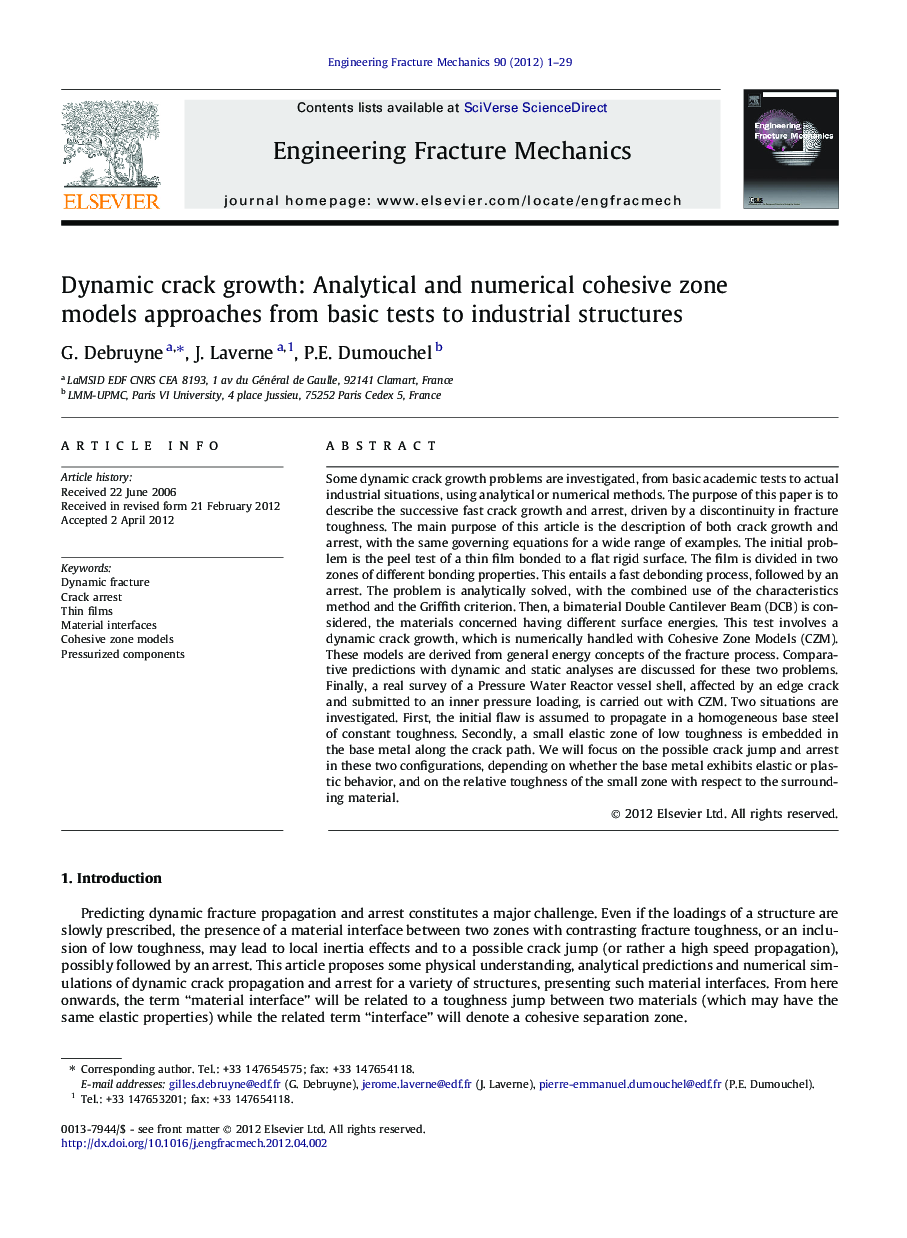| کد مقاله | کد نشریه | سال انتشار | مقاله انگلیسی | نسخه تمام متن |
|---|---|---|---|---|
| 770497 | 1463135 | 2012 | 29 صفحه PDF | دانلود رایگان |

Some dynamic crack growth problems are investigated, from basic academic tests to actual industrial situations, using analytical or numerical methods. The purpose of this paper is to describe the successive fast crack growth and arrest, driven by a discontinuity in fracture toughness. The main purpose of this article is the description of both crack growth and arrest, with the same governing equations for a wide range of examples. The initial problem is the peel test of a thin film bonded to a flat rigid surface. The film is divided in two zones of different bonding properties. This entails a fast debonding process, followed by an arrest. The problem is analytically solved, with the combined use of the characteristics method and the Griffith criterion. Then, a bimaterial Double Cantilever Beam (DCB) is considered, the materials concerned having different surface energies. This test involves a dynamic crack growth, which is numerically handled with Cohesive Zone Models (CZM). These models are derived from general energy concepts of the fracture process. Comparative predictions with dynamic and static analyses are discussed for these two problems. Finally, a real survey of a Pressure Water Reactor vessel shell, affected by an edge crack and submitted to an inner pressure loading, is carried out with CZM. Two situations are investigated. First, the initial flaw is assumed to propagate in a homogeneous base steel of constant toughness. Secondly, a small elastic zone of low toughness is embedded in the base metal along the crack path. We will focus on the possible crack jump and arrest in these two configurations, depending on whether the base metal exhibits elastic or plastic behavior, and on the relative toughness of the small zone with respect to the surrounding material.
► Dynamic crack growth and arrest in multi-toughness material by analytical methods or cohesive zone models.
► Classical static solutions underestimate crack arrest, static solutions based on energy balance are good arrest estimations.
► Key parameter for arrest is energy ratio.
► Focus on PWR undercladding, stabilizing crack growth by plasticity.
Journal: Engineering Fracture Mechanics - Volume 90, August 2012, Pages 1–29